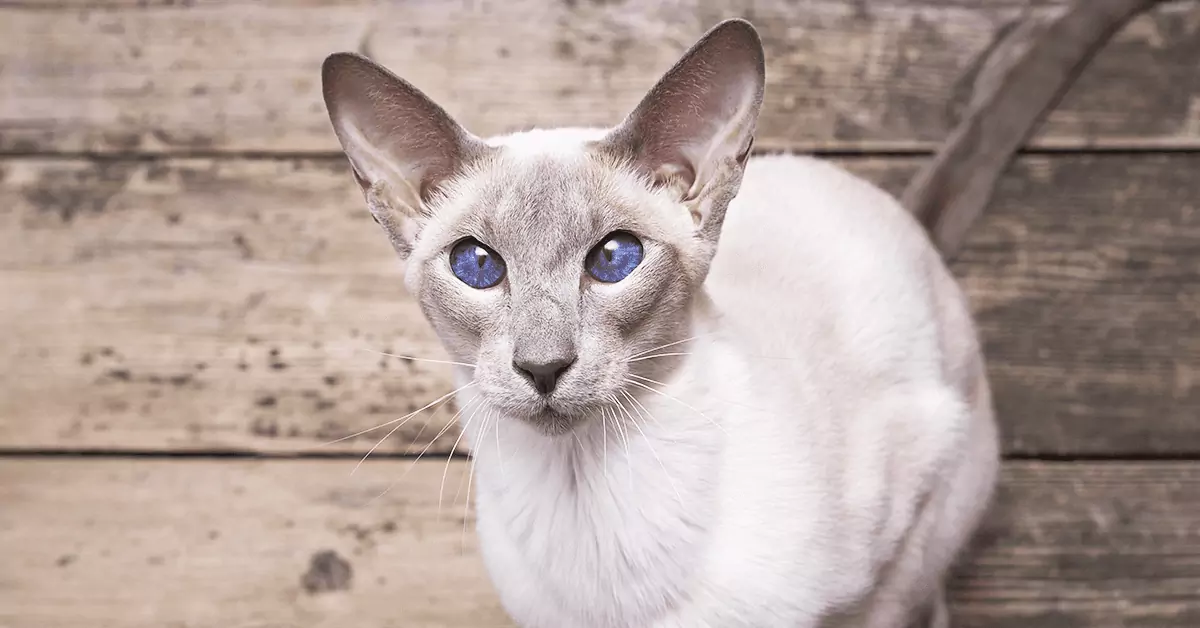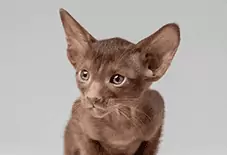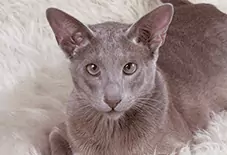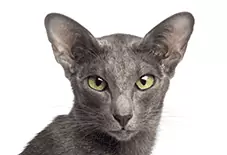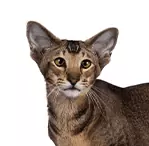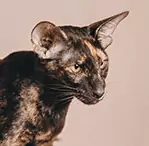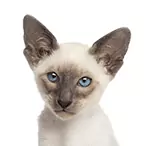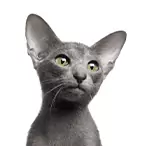
Best Fur Friend

High Kitty I.Q.

Low-Maintenance Looks
Looking for a constant companion to show you love and make you laugh? I’m the breed for you! We Orientals are one of the most friendly and social kitties around and we crave the company of the whole family (kids and cat-friendly
pets included). If you’re looking for a chill, independent cat, keep looking! I can’t be alone for long periods or I’ll get sad and destructive (and since I’m so smart, I will get into things that I shouldn’t). I need a
human who wants me by their side 24/7, wants to chat with me (I meow a lot), and loves to play. I’m athletic and full of energy and I love interactive playtime. My smarts make me gr
eat at learning fetch and other tricks, too! I may be high-maintenance in the
attention department, but my furbulous looks require almost no upkeep – a weekly
brushing I enough (and I’ll love spending that time with you). Even though my looks are breathtaking, it’s my big heart and fun-loving personality that make me one of the CFA’s most popular cat breeds!
关于我
Personality
Affectionate
Intelligent
Lively
Origin
England and United States
Coat Details
Type
Shorthair
Texture
Fine and Glossy
Colors
All
Pattern
All

My Many Looks

My Breed Characteristics

Furbulous Fact
Even though we share the same body type as our Siamese cousins (triangle head shape, large ears, almond eyes, and tubular body) when it comes to colors, we’ve got way more to offer. We Orientals are sometimes called Ornamentals because we come in so many coat color and pattern combinations. There are over 300 coat colors accepted in our breed standard! We come in every solid cat color under the sun and every pattern, too! In addition to the colorpoint of the Siamese, we can also be bicolor, parti-color, tabby, tortie, and smoke.

As I Grow Up
As you can see, we Oriental Shorthairs age pretty gracefully. Here are a few key milestones in my growth & development to be aware of as I grow up from a kitten to an adult and senior!

History of My Breed
There’s a reason we Oriental Shorthairs are sometimes called Rainbow Cats – it’s what we were bred for! Though our closest ancestors, the Siamese, are an ancient breed from Thailand, we are pretty new. Siamese cats were incredibly popular in Europe, but after World War II they were in danger of becoming extinct. In the 1950s a group of breeders in England wanted to save my ancestors and started a breeding program that brought back the Siamese and developed a new and more colorful version. English breeders crossed Siamese with other breeds like Russian Blues, British Shorthairs, and Abyssinians. Some of the litters had the traditional Siamese colorpoint pattern and blue eyes, which helped to increase the Siamese cat population. Other cats came out in a rainbow of solid colors and patterns, and when these cats were bred with more Siamese cats, Orientals were born! The introduction of these other breeds didn’t just bring color and pattern varieties – it also created my cousin, the Oriental Longhair. Some cat registries, including The International Cat Association, consider us separate breeds, but the Cat Fanciers’ Association considers us one breed. Orientals were also developed in the United States in the 1970s. A group of American breeders in New York fell in love with the idea of a Siamese personality in a kaleidoscope of colors and started a breeding program. They bred Siamese with American Shorthairs, which introduced even more color and pattern varieties. Today, between the Shorthairs and Longhairs, we come in over 600 color combinations and patterns – more than any other cat breed in the world! The New York breeders brought us to the attention of the CFA who officially recognized us in 1977. Between our rainbow coats and colorful personalities, we’ve been one of the most popular cat breeds ever since!

Care Tips
from Dr. Jessica Greenberg, Associate Veterinarian
1
Don’t leave your Oriental alone for too long.
Orientals crave company, so they’re best suited to a home where they’re not left alone for long periods of time. If you work long hours, they may not be the cat for you. Alternatively, keeping Oriental cats in pairs can help with this issue as long as they are socialized with each other early.
2
Be proactive about your Oriental’s dental health.
Dental disease can be a painful condition that cats suffer without showing obvious signs of discomfort. Subtle signs include weight loss, salivating around food, reduced appetite, chewing on one side of the mouth only, or a change in preference from biscuits to soft food. Tooth brushing, dental water additives, and prescription dental diets are ways of reducing the rate of dental decay.
3
Orientals can be fussy about their litter box.
In addition to keeping your Oriental’s litter box clean, you should have at least one extra litter box per cat in your home. If you find your Oriental does not use the litter box it may be related to the height of the walls of the box, the position in the home, or the substrate (material) of the litter. Try and play around with options until you find the perfect combination for your cat, which can take time.

Training Tips
from Dr. Jessica Greenberg, Associate Veterinarian
